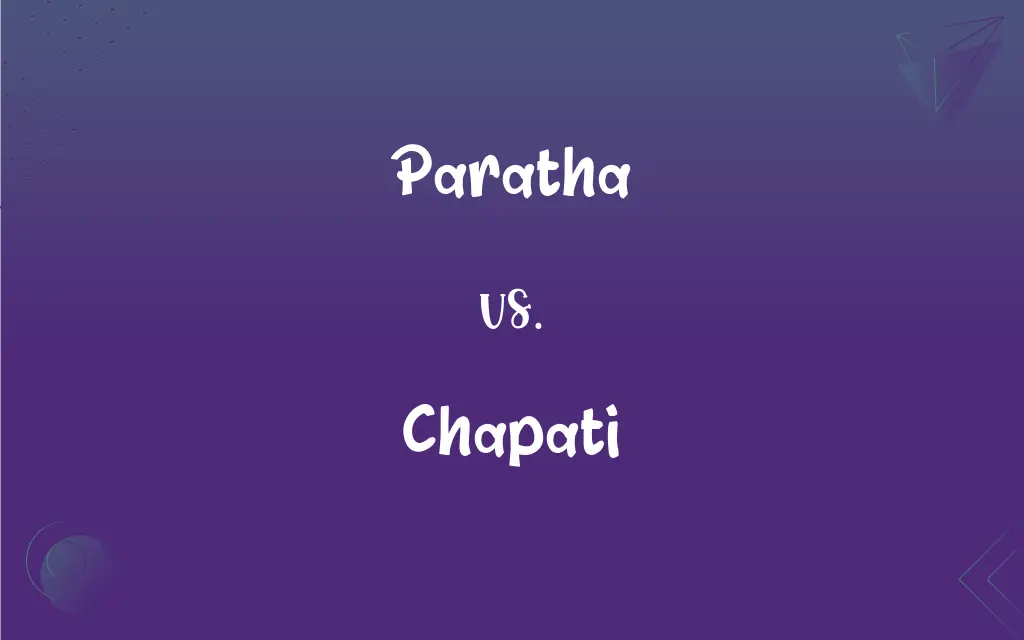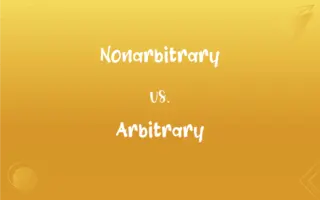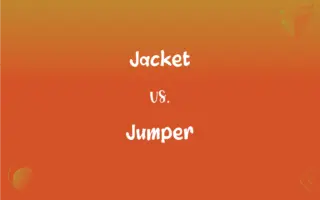Paratha vs. Chapati: What's the Difference?
Edited by Harlon Moss || By Janet White || Updated on October 5, 2023
Paratha vs. Chapati: "Paratha" is a flaky, multi-layered flatbread often with fillings, while "Chapati" is a simple, thin unleavened flatbread.

Key Differences
"Paratha" and "Chapati" are both traditional Indian flatbreads but differ in preparation and texture. While Paratha is known for its layers, often achieved by folding the dough multiple times, Chapati is straightforward, made with minimal ingredients and has a uniform texture.
The ingredients for both Paratha and Chapati usually consist of wheat flour, water, and salt. However, Paratha often incorporates ghee or butter, both in the dough and during cooking, giving it a richer taste and flaky texture. Chapati, on the other hand, is generally free of fats in the dough and is cooked on a flat griddle without oil, leading to a more rustic, wholesome taste.
Another distinguishing feature is the versatility of the Paratha, as it can be stuffed with various fillings ranging from spiced potatoes to paneer, making it a sumptuous standalone dish. Chapati, meanwhile, is typically served as an accompaniment to other dishes, helping scoop up gravies or lentils.
Cooking methods for Paratha and Chapati also vary. Parathas can be shallow fried on a griddle, enhancing their crispy layers, whereas Chapatis are partially cooked on a griddle and then exposed to an open flame, puffing up and gaining charred spots.
Finally, from a nutritional standpoint, because of the added fats and potential fillings, Parathas are often more calorically dense than the simple, light Chapatis.
ADVERTISEMENT
Comparison Chart
Nature
Descriptive of situations/events
Descriptive of statements or ideas
Function
Contradiction between expectation and outcome
Statement that contradicts itself but reveals a truth
Audience's Role
Recognize the incongruity
Reflect and discern the hidden truth
Common Usage
In everyday situations, speech, literature
Primarily in literature, philosophy, and thought exercises
Emotional Impact
Can evoke humor, sadness, surprise
Evokes contemplation, challenges conventional wisdom
ADVERTISEMENT
Paratha and Chapati Definitions
Paratha
A twist of fate where the opposite happens.
The environmentalist won the lottery and used the money to save forests, an irony not lost on her critics.*
Chapati
A statement seemingly contradictory but expressing a truth.
The only constant is change is a well-known paradox.*
Paratha
A disparity between expectation and reality.
The fireman's house burned down, an unfortunate irony.*
Chapati
A proposition opposing itself yet conveys a deeper meaning.
The more you learn, the less you know is a paradox that speaks to endless knowledge.*
Paratha
A rhetorical device emphasizing the opposite of what's stated.
How nice! she said, when it started to rain on the parade.*
Chapati
An assertion that refutes itself but holds a profound truth.
The only rule is that there are no rules is a paradox that challenges norms.*
Paratha
A situation highlighting the incongruity between appearance and substance.
The irony of the situation was that the vegetarian won the meat raffle.*
Chapati
A truth existing through contradiction.
To be free, we must have limits is a paradox of societal structures.*
Paratha
An outcome contrary to what was expected.
The irony was that the dog chased the cat, but the cat saved the dog from danger.*
Chapati
An idea that counters conventional beliefs but reveals insight.
Less is more is a design paradox many architects swear by.*
Paratha
An Indian bread with a texture somewhat resembling puff pastry; sometimes stuffed with vegetables etc.
Chapati
A flat, unleavened, disk-shaped bread of northern India, made of wheat flour, water, and salt. Also called roti.
Chapati
A flat, unleavened bread from northern India and Pakistan.
Chapati
A flat pancakelike bread cooked on a griddle, originating in India.
Chapati
Flat pancake-like bread cooked on a griddle
FAQs
Why use Irony in literature?
Irony can add depth, create humor, or emphasize disparities between expectation and reality.
What's the purpose of a Paradox?
Paradoxes challenge conventional understanding and prompt deeper contemplation.
Are Irony and Paradox the same?
No, irony highlights unexpected outcomes, while paradox presents contradictory statements revealing a truth.
Can a statement be both ironic and paradoxical?
Yes, if it conveys an unexpected truth in a contradictory manner.
Can Irony be unintentional?
Yes, situational irony can occur without intent, unlike dramatic or verbal irony.
Can a paradox be proven wrong?
Paradoxes aren't about right or wrong, but exploring underlying truths.
Are paradoxes just contradictory statements?
No, they seem contradictory but reveal an underlying truth.
Can you provide an example of dramatic irony?
In Shakespeare's "Romeo and Juliet," the audience knows Juliet isn't really dead, but Romeo doesn't—a classic case of dramatic irony.
What's a famous paradox in literature?
"It was the best of times, it was the worst of times" from Dickens' "A Tale of Two Cities."
Can Irony be sad?
Yes, tragic irony reveals an outcome that's unexpectedly heartbreaking.
Are paradoxes just riddles?
No, while both provoke thought, a paradox conveys deeper truths, and riddles are puzzles.
Does Irony always invoke humor?
No, irony can evoke a range of emotions, including sadness or surprise.
How can one identify irony in speech?
Tone, context, and the disparity between what's said and what's meant can hint at irony.
Why are paradoxes important in philosophy?
They challenge conventional thinking and promote intellectual exploration.
Does sarcasm equate to irony?
No, though related, sarcasm often involves mocking, while irony emphasizes incongruities.
Do paradoxes always make sense?
Initially, they may seem nonsensical, but reflection often reveals deeper meaning.
Is every contradictory statement a paradox?
No, only if it holds deeper truth or insight.
Can irony be visual?
Yes, visual irony involves images with unexpected elements or contexts.
How does irony enhance storytelling?
It adds depth and layers, making stories more engaging and thought-provoking.
Why are paradoxes used in spiritual teachings?
They challenge conventional beliefs, prompting deeper introspection and understanding.
About Author
Written by
Janet WhiteJanet White has been an esteemed writer and blogger for Difference Wiki. Holding a Master's degree in Science and Medical Journalism from the prestigious Boston University, she has consistently demonstrated her expertise and passion for her field. When she's not immersed in her work, Janet relishes her time exercising, delving into a good book, and cherishing moments with friends and family.
Edited by
Harlon MossHarlon is a seasoned quality moderator and accomplished content writer for Difference Wiki. An alumnus of the prestigious University of California, he earned his degree in Computer Science. Leveraging his academic background, Harlon brings a meticulous and informed perspective to his work, ensuring content accuracy and excellence.































































